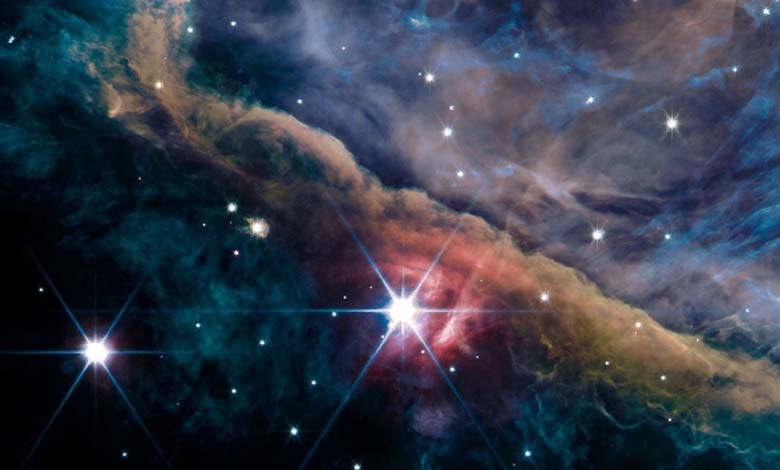The Massive Star Factory… “Web” captures stunning cosmic image in 4 colors

The James Webb Space Telescope captured an image of an area within the Large Magellanic Cloud, a satellite galaxy of the Milky Way, where stars are forming about 1630 light-years away in an unexplored southwestern region of the cloud.
According to a statement from the European Space Agency, this region, named “N79,” is a smaller version of the Carina Nebula, with a star-forming efficiency exceeding that by a factor of two over the past 500,000 years.
The wavelengths of light captured by the Mid-Infrared Instrument (MIRI) of the telescope reveal the glowing gas and dust in that region, providing a penetrating insight into the internal structure of the region.
Observing star-forming regions like “N79” holds great value for astronomers as their chemical composition resembles that of giant star-forming regions observed when the universe was younger.
Webb’s ability to study the “N79” region allows astronomers to compare star formation in our current cosmic neighborhood with deep observations of distant galaxies in the early universe.
This research is part of the “Web” program studying the evolution of disks around stars and envelopes surrounding forming stars, providing an opportunity to discover dust disks surrounding planets around stars similar to our sun in the Large Magellanic Cloud.
The image includes different wavelength bands, with 7.7-micron light in blue, 10 microns in cyan, 15 microns in yellow, and 21 microns in red.












